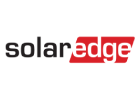Inverters
Voltage converters for photovoltaics, choose voltage converters by brands, power or number of phases. We have voltage converters at great prices. ✔️ we will advise you on the choice, ✔️ we are a proven e-shop.
Voltage converters are a key part of photovoltaic systems and serve to convert electrical energy from one form to another. They are therefore used to change the voltage in a photovoltaic system, thus enabling the use of common household appliances. Therefore, they are an irreplaceable element of every photovoltaic system. In our assortment you will find mains voltage converters - single-phase and three-phase, network (On-Grid) and hybrid voltage converters, which are used to convert direct voltage from batteries to alternating voltage.
We offer you products from renowned brands Fronius, Goodwe, SolarEdge, Solplanet, Huawei, Victron Energy, Deye at attractive prices.
Choose voltage converters based on specifications.
Why is it necessary to use a voltage converter and what are its most important functions
Utilization of the generated energy: Photovoltaic panels generate direct current (DC), while most household appliances and the distribution network use alternating current (AC). A voltage converter converts the DC from the panels to AC, which allows the generated electricity to be used in common household appliances and distributed through the electrical grid. Simply put, without an inverter, you would not use the generated energy.
Power efficiency: The inverter ensures that the electricity generated by the photovoltaic system meets the standards for voltage, frequency and current quality. These are necessary for a safe and efficient connection to the home or public electrical grid.
Safety: Voltage converters have built-in safety features that protect the system from excessive voltage, short circuits or other potential electrical problems. In the event of a power outage on the grid, they can also provide automatic system disconnection to prevent backfeed and protect grid maintenance workers.
Many modern inverters allow for monitoring and control of the performance of the photovoltaic system. Users can monitor how much energy their system is producing and sometimes adjust settings to optimize performance.
How are inverters classified
By number of phases
- Single-phase
- Three-phase
By type of use
- On-grid (grid) inverters
- Off-grid (island) inverters
- Hybrid inverters
Single-phase inverters are mainly used in smaller island systems. They are usually only used for devices with a power of up to 3 kW. Single-phase inverters are often used in smaller or residential photovoltaic systems. They are efficient and ideal for systems that do not require complex multi-phase control or large energy capacity.
Three-phase inverters are suitable for larger photovoltaic systems. Where it is necessary to efficiently process and distribute large amounts of solar energy generated.
Three-phase inverters are ideal for larger photovoltaic installations, such as commercial buildings, industrial facilities or large residential complexes, where efficient distribution of large amounts of energy is important. Three-phase systems are more suitable for transmitting large powers over longer distances with lower losses, compared to single-phase systems. Three-phase inverters contribute to higher voltage stability and a more even load distribution between the phases of the electrical network. This helps to minimize voltage stability issues and reduces the risk of phase overload.
On-grid
Grid-tie inverters, also known as on-grid or grid-tie inverters, are designed to connect a photovoltaic system to the public electricity grid. Their main task is to convert direct current (DC) from photovoltaic panels into alternating current (AC) that is compatible with the electricity grid standards.
- Grid inverters optimize the performance of a photovoltaic system and ensure that the electricity produced meets the grid's voltage and frequency requirements.
- They usually do not include batteries or energy storage capabilities.
- They are an ideal choice for homes and businesses that want to reduce their electricity bills with solar energy, while providing excess energy to the grid (as long as the electricity supplier allows it).
- They do not have energy storage capabilities, so they do not provide electricity in the event of a grid outage.
Grid inverters, when properly configured, allow their owners to use an alternative energy generation system, in this case solar energy, without a complex system and batteries. If there is a situation where this alternative energy is not enough, you can draw the deficit from the electricity grid.
Off-grid
Off-grid or Off-grid voltage converters operate without being connected to the distribution grid. The voltage converter is therefore connected to a battery, from which it takes energy and converts it from direct current to alternating current. The converters in these systems ensure not only energy conversion, but also efficient charging and discharging of these batteries, thus ensuring a continuous supply of energy even in periods without sunlight.
Hybrid
These voltage converters combine the advantages of both grid and island converters. This means that they can store energy and at the same time draw energy from the distribution grid, or send it there. However, they preferentially use solar energy and only switch to the distribution network when the batteries are discharged to a certain level. The biggest advantage, a frequently used function, of hybrid inverters is their ability to regulate the energy taken from the grid or from batteries.
How to choose a voltage inverter
Since it is a key element of the entire system, we do not recommend saving on quality or underestimating the choice of the right inverter. It is not enough to choose powerful photovoltaic panels, because their performance and good functioning ultimately depend on other components of the system, especially the voltage inverter, which is the most important element of the entire power plant.
The right inverter must therefore be optimally adapted to the photovoltaic power plant. It is necessary to maintain the right proportions between the power of the photovoltaic system and the power of the voltage inverter. An error occurs when the inverter's power is lower than the power of the panels. In such a case, you will lose the energy produced. The right voltage converter can handle the power of solar panels, but at the same time prevents energy waste.
The long-term load of the converter should be approximately 80% of its power. If its long-term use is more in the upper limit of 80% to 100% power, you will shorten its lifespan.


































